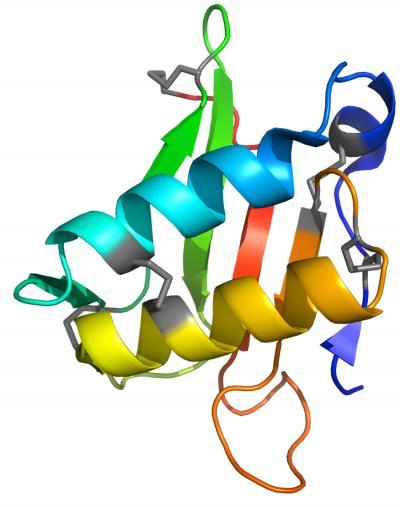Smut fungi are agents of disease responsible for significant crop losses worldwide. Principal Investigator, Dr. Thomas Smith and Research Associate Member, Dr. Dilip Shah at The Donald Danforth Plant Science Center collaborated on a project to develop a variety of corn that is highly resistant to corn smut caused by the fungus, Ustilago maydis. The results of this research are published in the recent article, "Transgenic maize plants expressing the Totivirus antifungal protein, KP4, are highly resistant to corn smut," in Plant Biotechnology Journal .
The most economically important crop in the U.S., American farmers planted nearly 90 million acres of corn generating nearly $50 billion in 2010. In addition to food and feed, the current emphasis on biofuels has elevated the importance of corn in U.S. agriculture in recent years.
Corn smut is an airborne fungus found most frequently on ears, tassels and nodes. Sweet corn is more susceptible to corn smut than is seed corn with annual losses often as high as 20% in the U.S. In the U.S. alone, corn smut is responsible for approximately $1 billion in crop losses annually (National Corn Growers Association).

Smut fungi are agents of disease responsible for significant crop losses worldwide. Principal Investigator, Dr. Thomas Smith and Research Associate Member, Dr. Dilip Shah at The Donald Danforth Plant Science Center collaborated on a project to develop a variety of corn that is highly resistant to corn smut caused by the fungus, Ustilago maydis.
(Photo Credit: Donald Danforth Plant Science Center)
Prior to the Danforth Center discovery, there were no corn varieties that were naturally immune to Ustilago maydis. Several methods to control the disease have been recommended including, crop rotation, sanitation, seed treatments, application of fungicides and modification of fertility and biological controls. Drs. Smith and Shah explored an alternative approach using a naturally found killer protein, KP4, made by a virus that lives in one specific strain of corn smut.
"This is the only symbiosis I know of in the virus world," said Smith. "Viruses like the common cold and the flu infect the host cell and destroy it after they have reproduced. In contrast, these corn smut viruses cannot leave the cell and the viruses 'know' that the host has to live if they hope to survive. To make sure its captive host lives, this virus, UMV4, makes a protein that is exported from the host cell and will kill off the other strains of corn smut trying to infect the same ear of corn. It's an infection of an infection; the corn smut infects the corn, the virus infects the smut, and virus produces the KP4 protein to kill competing fungi, and thus insuring the host will outcompete other corn smut strains. With our genetically modified corn, the plants are producing so much KP4 protein, that the corn smut strains commonly found in the field are killed by the plant before they get a chance to establish an infection."

The color changes from blue to red as the protein chain goes from the amino to carboxyl termini. The disulfide bonds in the protein are shown in gray.
(Photo Credit: Donald Danforth Plant Science Center)
Toxicity studies have shown that the KP4 proteins are safe for humans and animals to consume. Smith and Shah will continue to explore KP4 and other antifungal proteins ability to control other pathogenic fungi.
"Applying our control method could significantly reduce annual losses caused by corn smut and other fungi," said Smith. Plants often require a number of genes to only partially protect the plant from a particular fungal infection, making it difficult to use traditional breeding methods to develop resistant lines. Here we have shown that a single gene that can lend extremely robust protection, giving us hope that there are other similar and effective solutions to be found in nature."

Transgenic maize plants expressing the Totivirus antifungal protein, KP4, are highly resistant to corn smut, in Plant Biotechnology Journal.
(Photo Credit: Donald Danforth Plant Science Center)